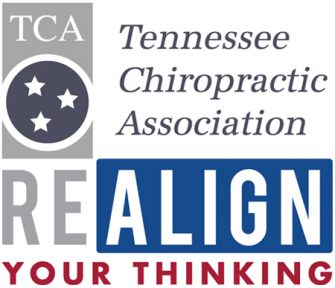For Your Spine’s Sake, Wear Your Helmet!
 One of the ongoing debates in motor vehicle safety is the use of helmets for motorcyclists. Do they make riding a motorcycle safer? Do they create the potential for additional injury? Or do they impact safety at all?
One of the ongoing debates in motor vehicle safety is the use of helmets for motorcyclists. Do they make riding a motorcycle safer? Do they create the potential for additional injury? Or do they impact safety at all?
According to the National Highway Traffic Safety Administration, in 2015 there were 88,000 motorcyclist injuries and 4,594 deaths. When compared to automobile drivers, motorcyclists are 30 times more likely to die in a traffic-related accident. In an effort to reduce head injuries from motorcycle accidents, legislatures across the country have enacted laws regarding helmet usage. The requirements from state to state are as extreme as they could be; some states requiring all motorcyclists to wear helmets while others have no mandatory use laws.
Opponents of mandatory helmet laws argue they infringe upon their freedom of choice along with claims of negative consequences of using a helmet. They note reduced visibility, strain on the spine from the weight of the helmet and possibility of additional injury in an accident theorizing that the heaviness of the helmet produces additional stress on the cervical spine in an accident situation. A frequently cited study for this argument was published in 1986 and used crash reconstructions and modeling to determine potential injury. These arguments have been effective in some states in reducing helmet usage requirements. However, some of those states have experienced an increase in the number of motorcycle crash fatalities since implementing the changes.
Recognizing the need to take a closer look at the difference a helmet can make in a motorcycle incident, a group of researchers performed a significant retrospective review presented at the 2017 Annual American Association of Neurological Surgeons Meeting which was also recently published in the Journal of Neurosurgery: Spine. The authors from the department of neurological surgery at the University of Wisconsin Hospitals and Clinics in Madison reviewed the incidence, severity, and functional outcomes of cervical spine injury in patients, both helmeted and unhelmeted, involved in motorcycle accidents.
They hypothesized that wearing a motorcycle helmet during a crash does not increase risk of cervical spine injury. They examined data at a Level 1 trauma center in Wisconsin over a 5-year period. Wisconsin, during the time of the study, required only individuals under the age of 18 years and persons with instructional permits to wear helmets, providing ample data for both use and non-use of helmets.
They identified over 1,000 patients involved in a motorcycle crash and retrieved all available imaging and radiology reports to verify the condition of the patient. Additionally, physical exam reports and neurological documentation were reviewed. Patients were then divided into 2 groups: helmeted and unhelmeted. Mortality was defined as death occurring during the hospitalization immediately after the accident.
Of the 1,061 patients included in the study, 323 (30.3%) were helmeted compared to 738 (69.6%) being unhelmeted. Males dominated both groups (87% helmeted and 82% unhelmeted). The mean age of the helmeted group was, as expected, younger than the unhelmeted group. (40.6 ± 17.1 years compared to 44.0 ± 14.8 years). There were no other significant differences between the groups.
The findings were quite telling with the unhelmeted group being almost twice as likely to have some type of cervical spine injury as the helmeted group (15.4% vs. 7.4%). While the injury severity scores were similar between all those with a cervical spine injury, in general, they were lower among the helmeted patients. While 10.8% of the unhelmeted group experienced a cervical spine fracture, only 4.6% of the helmeted group had this type of injury. Not only were unhelmeted riders more likely to have a fracture, they had a higher number of fractures than their helmeted counterparts.
There was no significant difference between the 2 groups for nerve root injury, or cervical strain. Among all patients who sustained a cervical spine injury, the unhelmeted patients had a significantly higher proportion of ligamentous injuries and cord contusions.
Injury to the cervical spine can be extremely dangerous. The proximity to the brain means the injury can have effects over a large portion of the body, with extreme cases causing paralysis and even death. While additional research is needed to also account for specific conditions such as speed and type of impact, this study shows a clear benefit to wearing a helmet when riding a motorcycle.
Not only did this study find significantly lower incidence of cervical spine injury as well as cervical fractures in helmeted riders compared to unhelmeted riders, but it demonstrated that helmet usage does not cause cervical spine injury and, in fact, may actually protect against it.
So, enjoy the invigorating experience of motorcycling, but keep that helmet on to help ensure you can experience the ride for many trips to come.
If you have been in an accident, regardless of the type of vehicle you were in, your doctor of chiropractic can perform a full exam to help assess any injury to your musculoskeletal system. If an injury did occur, chiropractic care can help get you back on the road quickly. If you don’t have a chiropractor, you can find a TCA member doctor HERE.
REFERENCES:
- Paul S. Page, MD, Zhikui Wei, MD, PhD, and Nathaniel P. Brooks, MD “Motorcycle helmets and cervical spine injuries: a 5-year experience at a Level 1 trauma center” Journal of Neurosurgery: Spine June 2018 / Vol. 28 / No. 6 / Pages 607-611 http://thejns.org/doi/full/10.3171/2017.7.SPINE17540
- Crompton JG, Bone C, Oyetunji T, Pollack KM, Bolorunduro O, Villegas C, et al.: Motorcycle helmets associated with lower risk of cervical spine injury: debunking the myth. J Am Coll Surg 212:295–300, 2011
- Eltorai AE, Simon C, Choi A, Hsia K, Born CT, Daniels AH: Federally mandating motorcycle helmets in the United States. BMC Public Health 16:242, 2016
- Goldstein JP: The effect of motorcycle helmet use on the probability of fatality and the severity of head and neck injuries. A latent variable framework. Eval Rev 10:355–375, 1986
- Jones MM, Bayer R: Paternalism and its discontents: motorcycle helmet laws, libertarian values, and public health. Am J Public Health 97:208–217, 2007
- National Highway Traffic Safety Administration: Traffic Safety Facts 2015. Washington, DC: U. S. Department of Transportation, 2016 (https://crashstats.nhtsa.dot.gov/Api/Public/ViewPublication/812384) [Accessed September 27, 2017]
____________________________________________________________
 This article is being shared as part of TCA’s
This article is being shared as part of TCA’s
“Realign Your Thinking” public-awareness campaign –
helping Tennesseans understand what chiropractic care offers
and the positive role it plays in the overall health care system.